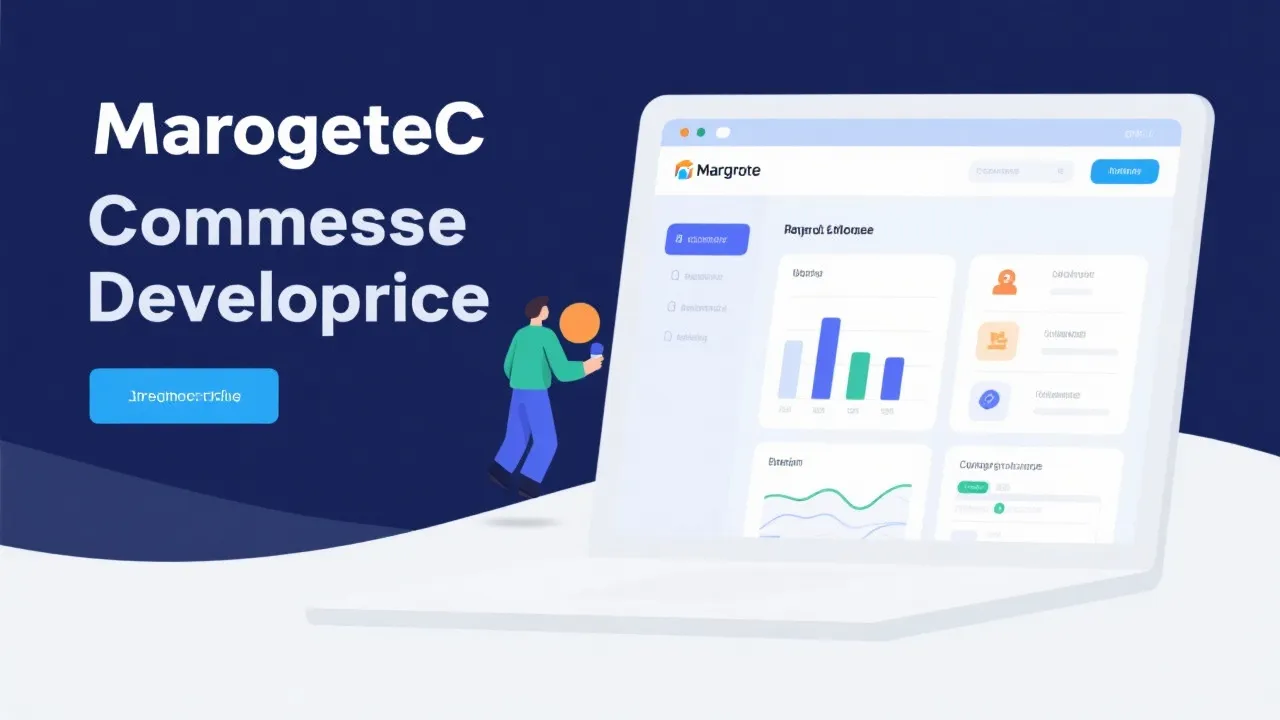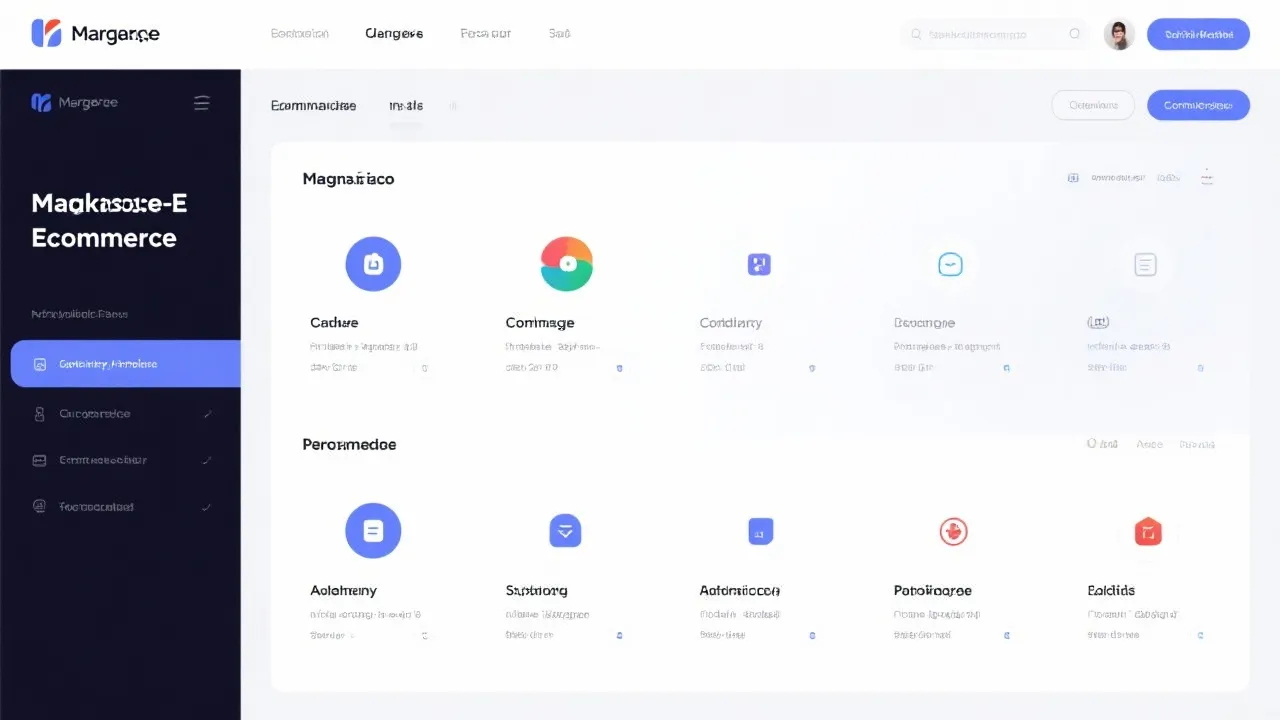Mastering eCommerce with Vtex and Salesforce
This article delves into the powerful combination of Vtex and Salesforce in modern eCommerce, highlighting their roles in revolutionizing online business infrastructure. Vtex, a cloud-based platform, and Salesforce, known for customer relationship management, together provide an integrated solution for holistic business growth and enhanced customer experiences.

Introduction to Vtex and Salesforce
In the rapidly evolving landscape of eCommerce, businesses are consistently seeking robust solutions to improve customer engagement, streamline operations, and increase sales. Two giants in this domain, Vtex and Salesforce, are paving the way in fostering interconnected business ecosystems. Understanding these platforms is crucial for companies aiming to enhance their digital presence. This article explores how these platforms complement each other, providing businesses with a competitive edge while diving deep into their functionalities, integration processes, and potential impact on various business models.
What is Vtex?
Vtex is a leading digital commerce platform that offers a comprehensive solution for businesses looking to unify their running processes. As an eCommerce platform designed to help businesses manage their online sales effectively, Vtex is known for its powerful capabilities in managing orders, inventory, and customer data. Its user-friendly interface, along with robust features tailored to different industries, empowers businesses to create tailored online shopping experiences for their customers.
Vtex provides a cloud-based infrastructure that ensures flexibility and scalability. With its multi-channel capabilities, businesses can sell across different platforms, such as websites, market integrations, and social media channels, all while managing inventory from a single dashboard. This architecture allows businesses to operate efficiently, providing not only a seamless shopping experience to customers but also allowing for deeper insights into sales processes and customer interactions.
Furthermore, Vtex's commitment to continuous improvement and innovation in eCommerce solutions ensures that users benefit from the latest trends and technologies available in the digital commerce landscape. From providing AI-driven recommendations to allowing personalized customer journeys, Vtex stands out as an essential asset for any business focused on eCommerce success.
Understanding Salesforce
On the other hand, Salesforce is a renowned cloud-based customer relationship management (CRM) platform. Specializing in managing and analyzing customer interactions and data throughout the customer lifecycle, Salesforce serves as a critical tool for businesses looking to understand their audience better and enhance customer relationships. By utilizing Salesforce, businesses can state-of-the-art tools and analytics to improve customer relationships, streamline processes, and ultimately enhance profitability.
Through its diverse offerings—including Sales Cloud, Service Cloud, Marketing Cloud, and additional industry-specific solutions—Salesforce provides tailored solutions that cater to the various needs of different business segments. The CRM's flexibility enables businesses of all sizes to use its advanced capabilities, no matter their industry. The integration of CRM into eCommerce platforms is crucial for personalizing customer interactions and optimizing sales strategies, allowing businesses to foster loyalty and preference among their customer base.
Salesforce’s continuous evolution also includes partnerships and integrations with various eCommerce platforms, enabling companies to leverage the vast amounts of customer data collected across their channels. This integration enables businesses to create targeted marketing strategies, enhancing customer engagement and conversion rates on their digital platforms.
The Synergy Between Vtex and Salesforce
When Vtex and Salesforce are combined, they create a powerful synergy that maximizes the potential of both platforms. Vtex provides the eCommerce framework, while Salesforce offers essential customer insights necessary to drive personalized experiences. Integrating these systems can lead to substantial benefits:
- Enhanced Customer Insights: With Salesforce's robust data capabilities, businesses can gain detailed insights into customer behaviors, preferences, and engagement patterns. Vtex complements this by translating these insights into actionable sales strategies that can target the right customers at optimal times.
- Seamless Operations: Both platforms together offer a unified dashboard that allows businesses to monitor, analyze, and optimize operations. This integration simplifies inventory management, order processing, and customer service, significantly improving operational efficiency and reducing response times to customer inquiries.
- Scalable Solutions: The cloud-based nature of both solutions ensures that businesses can easily scale their operations in line with demand. Whether during peak sales periods or when expanding into new markets, the integration allows for easy adjustments to inventory and customer relationship strategies, making it easier to adapt to changing market conditions.
Moreover, the integration of Vtex and Salesforce fosters improved collaboration across different teams within an organization. Marketing, sales, and customer service can work in tandem, ensuring a holistic approach towards customer acquisition and retention. The streamlined communication facilitated by this integration can lead to more innovative solutions and a more agile business response to market shifts.
Integration Process
Integrating Vtex with Salesforce involves several steps. It requires technical expertise to sync data between the two platforms effectively. Typically, businesses will need to:
- Assess their current eCommerce infrastructure and define integration goals. This initial step involves understanding existing systems, identifying gaps, and determining how the integration can fulfill specific business objectives.
- Choose the appropriate tools and APIs for seamless data transfer. Both platforms offer various API endpoints that provide integration capabilities between Vtex and Salesforce, enhancing the speed and efficiency of data exchanges.
- Customize the integration based on specific business needs. Engaging with developers who are experienced in both platforms can help customize workflows that suit business requirements, like automation of tasks and reporting metrics.
- Test the integration thoroughly. This critical phase ensures that all systems are functioning harmoniously before full deployment. It usually involves conducting user acceptance tests to validate that the system meets business processes.
Additionally, it is important to keep in mind that maintaining the integration requires ongoing monitoring and regular updates. As both Vtex and Salesforce evolve, businesses must adapt their integration strategies to leverage new features, ensure security compliance, and maintain operational efficiency.
Comparison Table: Vtex vs. Salesforce Features
| Feature | Vtex | Salesforce |
|---|---|---|
| Core Function | Digital commerce platform | Customer relationship management |
| Cloud-Based | Yes | Yes |
| Inventory Management | Advanced | Limited |
| Customer Insights | Basic | Comprehensive |
| Multi-Channel Support | Extensive | Limited to integrated platforms |
| Customizability | High | Very High |
Such a comparison highlights the distinctive strengths of each platform, helping businesses to make informed decisions about how to leverage them effectively in tandem.
Importance of Integration in the Modern Business Environment
The integration of eCommerce platforms with CRM systems like Salesforce is no longer optional in today's digital age. Customers have become accustomed to seamless, personalized, and efficient interactions with brands. Businesses that leverage the combined capabilities of Vtex and Salesforce not only enhance customer satisfaction but foster loyalty by ensuring that clients receive relevant content, timely recommendations, and personalized service.
Moreover, integrated solutions offer a significant advantage in data analytics. As data collection becomes increasingly complex, the ability to pull insights from varied sources is essential. The combination of Salesforce's customer insights with Vtex's operational data creates a rich tapestry of information that can inform every aspect of the business, from product development to marketing campaigns.
Additionally, a well-integrated system allows for more effective tracking of customer journeys. Businesses can monitor interactions across different touchpoints, ensuring that their sales strategies are not only informed but also responsive to changing customer needs. In doing so, companies can implement targeted marketing strategies that significantly increase conversion rates and drive profitability.
Furthermore, in an age where data privacy is paramount, having comprehensive integration protocols can enhance a company’s ability to maintain compliance with regulations while also securing customer information. By integrating securely, businesses can adopt a more customer-centric approach that prioritizes trust and transparency, which is crucial in fostering long-term customer relationships.
Case Studies of Successful Integration
Considering the effectiveness of Vtex and Salesforce integration, several case studies exemplify its successful implementation and the resultant benefits:
Case Study 1: Fashion Retailer
A leading fashion retailer faced challenges in online sales due to disconnected systems. Previous attempts to personalize marketing messages failed because customer behavior data was siloed across different platforms. By integrating Vtex and Salesforce, the retailer gained unified customer insights, which allowed them to implement targeted email campaigns and promotions based on purchase history and browsing behavior. The result was a 30% increase in online sales within three months.
Case Study 2: Home Goods Supplier
A home goods supplier experienced difficulties with inventory management across multiple eCommerce channels. After leveraging the integration of Vtex and Salesforce, the business could streamline its inventory checks, process orders more efficiently, and automate customer communication. They saw a significant decrease in order fulfillment errors and improved customer satisfaction ratings. Implementing this integration also reduced operational costs by 15% due to better resource allocation.
Case Study 3: Electronics Manufacturer
An electronics manufacturer wanted to enhance customer loyalty and engagement through a multi-channel approach. They used Salesforce to analyze customer feedback and buying patterns, while Vtex allowed them to launch new online promotions quickly. With the combined power of both platforms, the manufacturer developed personalized shopping experiences that resulted in a 40% increase in customer retention.
These case studies illustrate the transformative impact that integrating Vtex with Salesforce can have on various sectors, promoting increased efficiency, enhanced customer engagement, and improved sales performance.
Challenges of Integration
Despite the numerous benefits, integrating Vtex with Salesforce is not without its challenges. Businesses must navigate several obstacles to achieve a successful synchronization of these systems:
- Technical Expertise: Implementing an integration requires a certain level of technical skills that may not be readily available in-house. This often necessitates hiring external consultants or dedicating significant resources to training internal staff.
- Data Migration Issues: Migrating data between two platforms can result in complications, such as data loss or inconsistencies. Businesses must conduct thorough audits to ensure data integrity throughout the migration process.
- Cost Implications: Depending on the scale of integration, costs can accumulate quickly, especially for small to medium-sized enterprises that may not have large budgets set aside for technology solutions.
- User Adoption: Even after a successful integration, ensuring that employees effectively use the new system can be a challenge. Comprehensive training and support systems must be established to facilitate user adoption.
Addressing these challenges proactively can significantly mitigate risks and enhance the chances of a successful integration effort.
FAQs
- How does Vtex enhance eCommerce operations? Vtex optimizes operations by providing tools for inventory management, digital storefronts, and order optimization, ensuring smooth online transactions. Its multi-channel capabilities enable businesses to reach a broader audience without sacrificing efficiency.
- What makes Salesforce essential for eCommerce businesses? Salesforce's CRM capabilities allow businesses to understand customer needs deeply, enabling personalized marketing and nurturing client relationships effectively. Its analytical tools help identify trends that drive sales growth.
- Can small businesses afford these integrations? Scalable pricing models ensure that businesses of all sizes can afford and benefit from integrating Vtex and Salesforce. Flexible subscription options allow even small enterprises to gain access to high-level technology without overwhelming their finances.
- What industries benefit the most from Vtex and Salesforce integration? Retail, manufacturing, and service industries often see great benefits due to the customer-centric nature of eCommerce solutions. However, this integration can prove beneficial across various sectors as the need for personalized customer interactions increases.
- How long does the integration process typically take? The timeline for integration can vary significantly based on the complexity of the systems being integrated and the extent of customization required. Generally, businesses should expect the process to take anywhere from a few weeks to several months.
Conclusion
In the transformative world of eCommerce, Vtex and Salesforce stand out as leaders in providing integrated solutions that enhance business operations and customer experiences. Their combined strength helps businesses not only survive but thrive in a competitive market. By embracing the integration of these platforms, companies can unlock new levels of efficiency, customer insight, and operational scalability.
As digital commerce continues to evolve, the ability to adapt rapidly becomes an invaluable asset. The seamless integration of Vtex and Salesforce provides the necessary tools for businesses to achieve sustained growth and success, ensuring that they remain at the forefront of innovation in an ever-changing marketplace. Moreover, businesses that prioritize this integration are better positioned to respond to market demands, ultimately yielding higher sales conversions and improved customer loyalty over time.
Through the successful application of both Vtex and Salesforce, organizations can pave the way for a prosperous future, where the customer is always at the center of their business strategies.
-

A Guide to Cost-Efficient Small Electric Cars for Seniors
-

Mastering Debt Consolidation: Boost Your Credit Score and Manage Interest Rates
-

Your Guide to Loans, Credit Checks, and Interest Rates
-

Affordable Independent Living: Finding the Right Senior Housing
-

Guide to Senior Living Apartments: Affordable and Comfortable Environments









